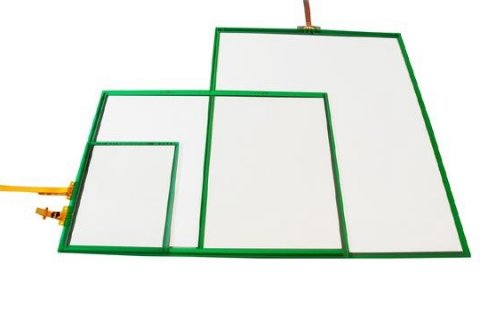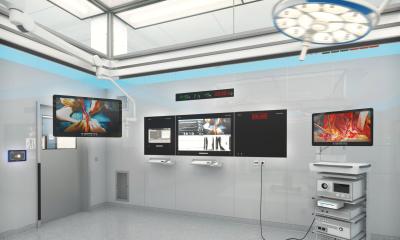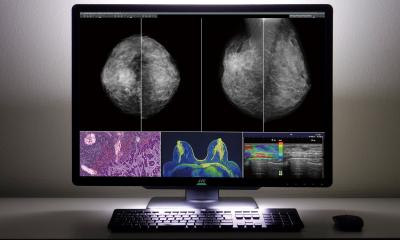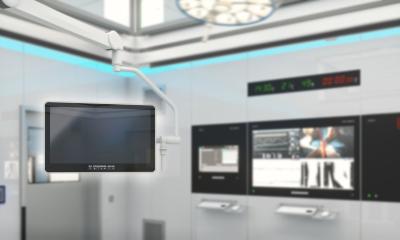
Image source: Fujitsu
News • Displays in medical equipment
Exploring the benefits of resistive touch panels
When it comes to touch panels for medical equipment, there are some obvious requirements. For instance, medical professionals need the flexibility to use gloves, at any given moment. They may have wet hands or a wet screen but should still be able to operate the touch panel, where the response of the panel should and cannot not be affected.
Another requirement, also not immediately seen as critical, but just as important. This is the case of the Electro Magnetic Interference (EMI). You would not want to have any interference on medical equipment, particularly on life critical devices. So a medical device should not emit or not be disturbed by EMI. For this reason, the International Electrotechnical Commission put in place the EMI/EMC standards for medical electrical devices. However, engineers developing medical systems struggle to meet those standards.
When searching for the “ideal” touch panel to fit in a medical devices, there is a tendency from decision makers to want whatever sounds like the latest technology. For instance, PCAP touch panel might seem the best fit as they are used in today’s most popular consumer devices, the light touch feeling seems ideal. However, PCAP touch panels both emit and are disturbed by EMI, they require complex tuning to meet EMI expectations. In contrast, resistive panels have an extremely low EMI emission and are not sensitive to EMI.
On that point of view resistive panels are much more adapted to the medical equipment than PCAP. But this is not the only advantage. Resistive touch panels react to finger pressure, they are not affected by gloves or water drops. No compromise is needed as they will work in all conditions. On the opposite, capacitive panels have to be tuned to accept glove input, this can make them extremely sensitive, so much that they can even detect a bare finger before it has touched the screen, making false inputs more likely. PCAP panels also require specific tuning to cope with liquid drops on their surface.

Image source: Fujitsu
The new “Feather touch – Long life” resistive touch panels from Fujitsu combine the advantages of resistive and capacitive panels in medical applications, while requiring no tuning. They have the same light touch feeling as capacitive panels, and support image zooming and rotating functionality. The touch panels are specified to support 10 million inputs, making them the perfect alternative to capacitive panels in the medical field.
Source: Fujitsu Components Europe B.V.
15.01.2021











